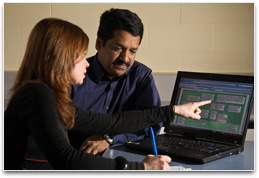These maps represent possible developmental pathways students may take when developing scientific understandings.
They demonstrate the relationships between concepts, how concepts contribute to a range of scientific fields and how concepts of increasing complexity are developed from more simple understandings.
The maps represent pathways of
student concept development across a number of areas of science. They are not intended as a syllabus or an assessment resource.
The maps represent one ‘story’ about how knowledge develops in science. As you explore the maps and use them in your planning, you may like to add concepts and develop other ‘stories’ to scaffold your students’ understanding of the ‘big ideas’ in science.
The articles in this archive were written to align with the previous AusVELS curriculum.
While content may still be relevant in the classroom, always
check levels and descriptions against the current science F-10 curriculum.
Visit the science and STEM section for more teaching resources.
Navigating and using the maps
 The maps indicate student conceptual development from foundation to year 10. The arrow on the left hand side of the map indicates increasing conceptual complexity.
The maps indicate student conceptual development from foundation to year 10. The arrow on the left hand side of the map indicates increasing conceptual complexity.
Individual concepts are presented in separate boxes. Within each box, there may also be links to related science continuum critical teaching ideas and links to other maps in which the concept also appears.
Each concept supports other, more complex concepts. These relationships are indicated by the arrows joining the boxes.
Maps – Forces and motion
Maps – Living things
Maps – Structure of matter
Maps – Earth and Space
Maps – Nature of Science